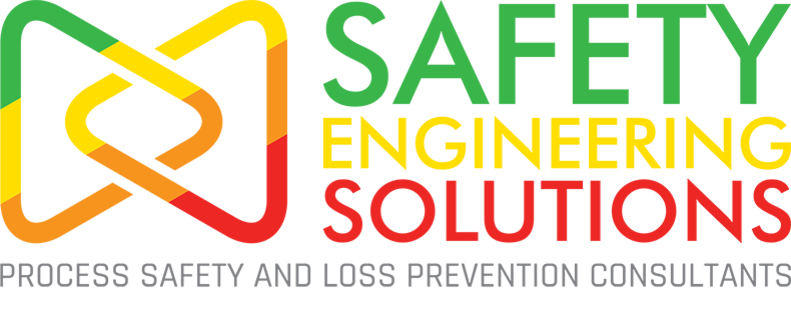Can You Visualise Your Risks?
Assess, manage, and communicate your key hazards and risks effectively and graphically using Bowtie diagrams. Simple and user-friendly barrier-based Bowtie analysis, development, validation and maintenance services for all industry sectors and most applications. Contact Safety Engineering Solutions today to find out how we can assist.
Introduction to Bowtie Diagrams
The purpose of Bowtie diagrams is to identify and communicate the major hazards, and their respective controls and mitigations, to ensure that risks are managed to a level that is tolerable. This is a much more effective way to communicate than simple text. Bowties diagrams are useful in any industry, job, activity, etc. We use the powerful Bowtie XP software.

Bowtie analysis is used to display a risk showing a range of possible causes (threats) and consequences. It is used when the situation does not warrant the complexity of a full fault tree analysis (FTA) or when the focus is more on ensuring that there is a barrier or control for each failure pathway. It is useful where there are clear, independent pathways leading to failure.
The Bowtie methodology is used for risk assessment, risk management and (importantly) risk communication. The method is designed to give a better overview of the situation in which certain risks are present, to help people understand the relationship between the risks and organizational events.
The strength of the methodology lies in its simplicity. Bowtie analysis is a simple diagrammatic way of describing and analysing the pathways of a risk from causes to consequences. It can be a combination of the thinking of a fault tree analysing the cause of an event (represented by the knot of a bow tie) and an event tree analysing the consequences. However, the focus of the bowtie is on the barriers between the causes and the risk, and the risk and consequences.
Bowtie diagrams can be constructed starting from fault and event trees but are more often drawn directly from a brainstorming session.
Bowtie analysis can also be used in layer of protection analysis (LOPA). The LOPA plugin in Bowtie XP allows such assessments to be carried out easily

Bowtie Example - Hazards of Walking on Stairs
Bowtie diagrams are highly flexible and the level of information to display can be adapted to suit, starting with a high-level overview. The diagrams can be made as simple or as complex as required. Typically, the diagrams are printed on A3 size paper, but some clients demand more complex bowties which may be printed on up to A0 size paper.
As you can see in example, developed by Safety Engineering Solutions for one client, only the threats (blue boxes on left hand side) and potential consequences (red boxes on right hand side along with risk score) are displayed. The boxes can be expanded (individually, or completely) within the software by clicking on the + sign on each box. This level of information can easily be displayed on A4 size paper.

The level of information can be expanded - the example below shows the grouping of barrier types providing protection and mitigation for the threats.
The different barrier groups types can be colour-coded for ease of differentiation. The number of individual barriers in each group is indicated. The diagram starts to build a picture of strength of depth with barriers of different types, as part of a 'hierarchy of controls'. This example is legible on A3 size paper.
The level of information can be fully expanded - the example below shows all the individual barriers providing protection and mitigation for the threats. Departments or individuals can be assigned as barrier-custodians.


Bowtie Service Offering
Industries & Sectors
All industries and sectors including private sector, public sector, government and not-for-profit
Process Safety
Safety Case / COMAH Safety Report (ALARP demonstration)
Safety Critical Element (SCE) Health Check
HAZID
SIMOPS (drilling, construction, turnarounds)
SIL / LOPA
Emergency Response Planning
Risk Register
PSM auditing
Incident management
Occupational Safety & Health
Workplace risk assessment
Office safety
Personal safety
Driving
Auditing
Environmental
Environmental Management
Pollution Prevention and Control
Environmental Critical Elements (ECE)
Incident management
Projects
Risk Register
Business / Asset Risk
Financial risk
Business continuity
Quality Control / Quality Assurance
Defect analysis and diagnostics
Incident management
Security
Asset protection
Cyber security
Anti-Terrorism
Air travel
Personal safety
Incident managemen
The Next Steps
A Professional Process Safety Engineer will review your existing risk profile and risk assessments and develop the necessary Bowtie diagrams to give you the insight and control you need
The process can start from a blank sheet of paper (full assessment of risks), or existing text-based risk assessments can be readily incorporated into Bowtie diagrams. You will be amazed at the immediate improvement in how you see your risks.
The development process can be either workshop or desk-top based - either approach can be valid. Once the Bowtie diagrams are developed, they are reviewed by you
The Bowtie diagrams are intended to be live tool and kept updated in line with any changing risks or barrier effectiveness; Safety Engineering Solutions can manage the maintenance of the Bowties for you on an ongoing basis.
You may wish to purchase a software license (if you do not already have one) to enable the Bowtie diagrams to be viewed and maintained. We can discuss the various options with you.
Safety Engineering Solutions has a global reach.


Contact Safety Engineering Solutions today to find out more
Contact Safety Engineering Solutions today on 07808 889 684 or click the link to find out how we can help you manage risk.

